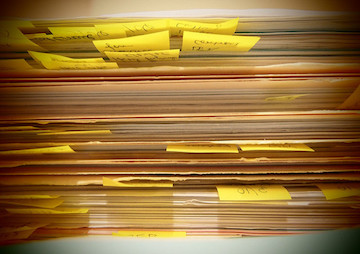The Intercept Expands Public Access to the Snowden Archive With Release of SIDtoday Files
In order to make possible a fuller exploration of the U.S. government’s activities in the post-9/11 era, The Intercept on Monday began publishing more of the source material leaked by National Security Agency whistleblower Edward Snowden in the summer of 2013. Lisa Nottingham / CC-BY-2.0
Lisa Nottingham / CC-BY-2.0
In order to make possible a fuller exploration of the U.S. government’s activities in the post-9/11 era, The Intercept on Monday began publishing more of the source material leaked by NSA whistle-blower Edward Snowden in the summer of 2013.
Intercept co-founder Glenn Greenwald explained:
Today, The Intercept is announcing two innovations in how we report on and publish these materials. Both measures are designed to ensure that reporting on the archive continues in as expeditious and informative a manner as possible, in accordance with the agreements we entered into with our source about how these materials would be disclosed, a framework that he, and we, have publicly described on numerous occasions.
The first measure involves the publication of large batches of documents. We are, beginning today, publishing in installments the NSA’s internal SIDtoday newsletters, which span more than a decade beginning after 9/11. We are starting with the oldest SIDtoday articles, from 2003, and working our way through the most recent in our archive, from 2012. Our first release today contains 166 documents, all from 2003, and we will periodically release batches until we have made public the entire set. The documents are available on a special section of The Intercept.
The SIDtoday documents run a wide gamut: from serious, detailed reports on top secret NSA surveillance programs to breezy, trivial meanderings of analysts’ trips and vacations, with much in between. Many are self-serving and boastful, designed to justify budgets or impress supervisors. Others contain obvious errors or mindless parroting of public source material. But some SIDtoday articles have been the basis of significant revelations from the archive.
Accompanying the release of these documents are summaries of the content of each, along with a story about NSA’s role in Guantánamo interrogations, a lengthy roundup of other intriguing information gleaned from these files, and a profile of SIDtoday. We encourage other journalists, researchers, and interested parties to comb through these documents, along with future published batches, to find additional material of interest. Others may well find stories, or clues that lead to stories, that we did not. A primary objective of these batch releases is to make that kind of exploration possible.
—Posted by Alexander Reed Kelly.
Your support matters…Independent journalism is under threat and overshadowed by heavily funded mainstream media.
You can help level the playing field. Become a member.
Your tax-deductible contribution keeps us digging beneath the headlines to give you thought-provoking, investigative reporting and analysis that unearths what's really happening- without compromise.
Give today to support our courageous, independent journalists.






You need to be a supporter to comment.
There are currently no responses to this article.
Be the first to respond.